| Over 100 Clean Trucks Powered By Renewable Fuel Now Operate At The Ports Of Long Beach And Los Angeles
NEWPORT BEACH, Calif. – October 29, 2019 –Meeting the challenge to clean up some of the most polluted air in the country, Southern California has hit a new milestone with over 100 trucks outfitted with the cleanest ultra low-NOx engines available now operating in the Port of Los Angeles and Port of Long Beach. Visionary port trucking companies are leading the transformation from diesel to clean trucks that are equipped with the ultralow-NOx Cummins Westport (CWI) ISX12N engine and fueled with Clean Energy Fuels Corp. (Nasdaq: CLNE) Redeem™ renewable natural gas (RNG), the cleanest fuel available for heavy-duty trucks. The Clean Air Action Plan (CAAP), adopted by the San Pedro Bay Ports in 2017, called for the transformation of trucking away from diesel and this change is now underway. These leading companies include Overseas Freight, Total Transportation Services, Pacific 9 Transportation, 4 Gen Logistics, Orange Avenue Express, NFI industries, Green Fleet Systems, MDB Transportation, Green Trucking LLC, West Coast Trucking, and Tradelink Transportation. The California Air Resources Board (CARB) has approved a $533 million plan for clean transportation investments which will promote clean vehicle technologies such as natural gas trucks. The plan should ensure the statewide Clean Vehicle Rebate (CVRP) and Hybrid and Zero-Emission Truck and Bus Voucher Incentive Projects (HVIP) effectively address the need to accelerate the cleanup and transformation of California’s vehicle fleet. “California is backing up our tough vehicle regulations with money to help individuals and businesses access the newest, cleanest technology” said Mary Nichols, CARB Chair in a public meeting where the plan was approved. “It will take a mix of incentives and mandates to meet public health and climate goals. We need to speed up the pace of change, and these investments play an important role in assuring the state remains home to the nation’s largest fleet of advanced vehicles.” The transportation sector is responsible for about 40% of California’s greenhouse gas (GHG) emissions and more than 80% of the state’s smog-forming NOx emissions, which are a key source of air pollution. According to the annual emissions inventories prepared by both ports, trucks are the largest source of GHG emissions and the second largest source of NOx emissions from port-related activities. “Switching to trucks fueled with RNG is vital to improving air quality and fighting climate change in our country’s largest port complex.” said Greg Roche, vice president, Clean Energy. “This is a prime example of fleets taking action that immediately decreases the environmental impact of their operations. Switching to cleaner fuel and engine technologies is reducing air and climate pollution and helping the region achieve its clean air goals.” The trucks are outfitted with the Cummins CWI ISX12N natural gas engine, which achieves the lowest emission levels in North America while delivering outstanding performance and reliability. The ISX12N is certified by California Air Resources Board (CARB) to reduce smog-forming NOx emissions by 90% compared to the current engine standard, and by 98% when compared to the almost 8,000 older diesel trucks operating in the ports today. Redeem is the first commercially available RNG vehicle fuel. It is derived from capturing biogenic methane that is produced from the decomposition of organic waste from dairies, landfills, and wastewater treatment plants. According to CARB, RNG can reduce GHG emissions by 40% to over 400% depending upon its waste source compared to diesel emissions, moving beyond zero GHG emissions. “We work hard at combating air pollution every day, but we have more work to do. We need to increase the rapid deployment of clean technologies to help in our efforts,” said Wayne Nastri, executive officer, South Coast AQMD. “These fleets are helping us achieve our commitment to public health by replacing dirty diesel trucks with near-zero emission, natural gas trucks.” “Replacing our diesel fleet with CNG trucks running clean-engine technology is part of our long term goal to be operating at near-zero emissions by 2020,” Vic LaRosa, president of TTSI. “We’re proud to be among the first to deploy ultralow-NOx trucks and encourage the 14,000 trucks that call at these ports each month to follow suit.” RNG-Powered Trucks Now Proven for Port Trucking Clean Energy and CWI recently concluded a demonstration of 20 Class 8 trucks outfitted with the Cummins ISX12N engine and fueled with Redeem RNG. The project was funded by Clean Energy, CARB, the California Energy Commission (CEC), South Coast Air Quality Management District (SCAQMD). The project followed seven trucking companies evaluating the technology in the demanding duty cycles of port and regional trucking. “This project confirms that the ISX12N engine paired with RNG can successfully perform port drayage and regional trucking while providing the most cost-effective and affordable solution for clean and sustainable trucking in our congested transportation corridors,” said Roche. “There is no better substitute to prove performance, durability, reliability and economic viability of a technology than to put it into real-world fleet operations,” said Tom Swenson, business development manager, Cummins, Inc. “The ISX12N ultralow-NOx engine has not only proven itself, but has become the preferred powertrain for many drivers. Beyond providing ultralow emissions, the engines are also substantially quieter in operation, resulting in lower noise pollution.” The 20 demonstration trucks have traveled over 800,000 miles, moving goods throughout the southern California region from the ports to Commerce, Fontana, Riverside, Moreno Valley, San Diego, the Central Valley and other typical port container destinations. Several of the participating fleets have either already purchased additional ultra low-NOx trucks or plan to do so. The project sought to generate interest in ultra low-NOx trucks, particularly with the incentive funding that California is providing to help truckers transition to this clean technology. Ultra low-NOx trucks are key strategies for improving air quality in the CARB State Implementation Plan, SCAQMD Air Quality Management Plan, and the Ports’ CAAP. Next year SCAQMD is expected to vote on “indirect source” regulations that target cargo-moving industries, primarily diesel trucks.
|
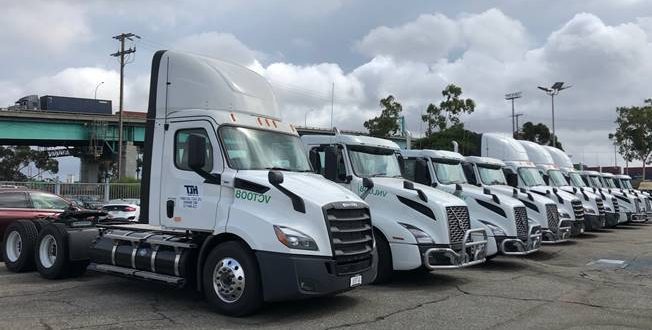
 Alternative Energy HQ solar power for homes, wind energy, and bio fuel issues
Alternative Energy HQ solar power for homes, wind energy, and bio fuel issues

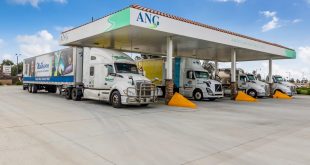
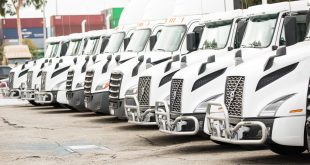
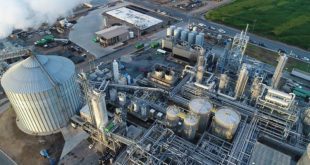
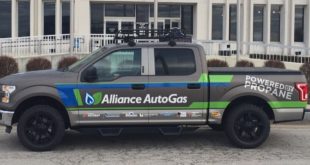
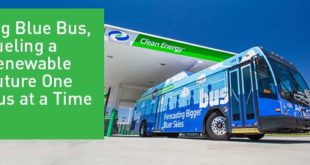
One comment
Pingback: Clean Trucks Powered By Renewable Fuel